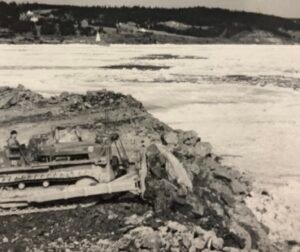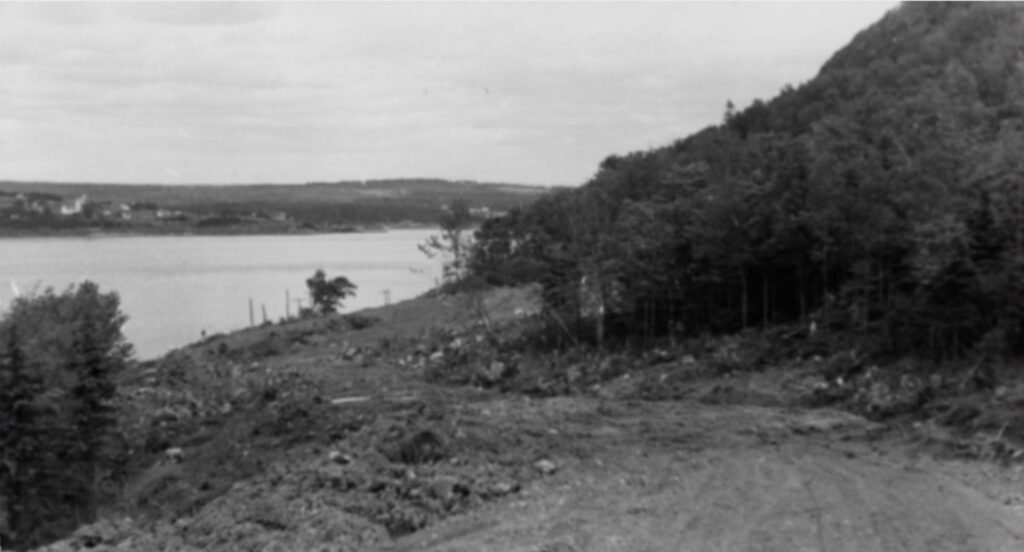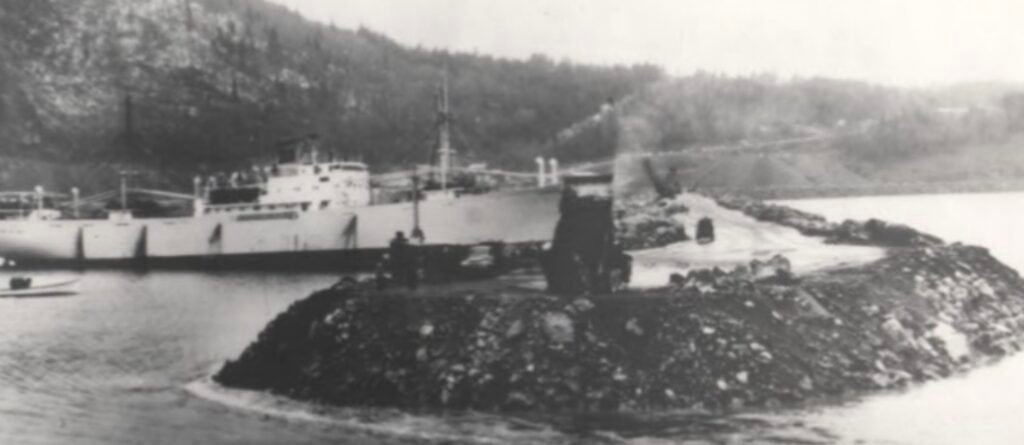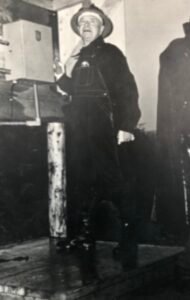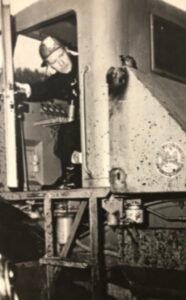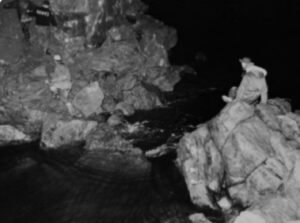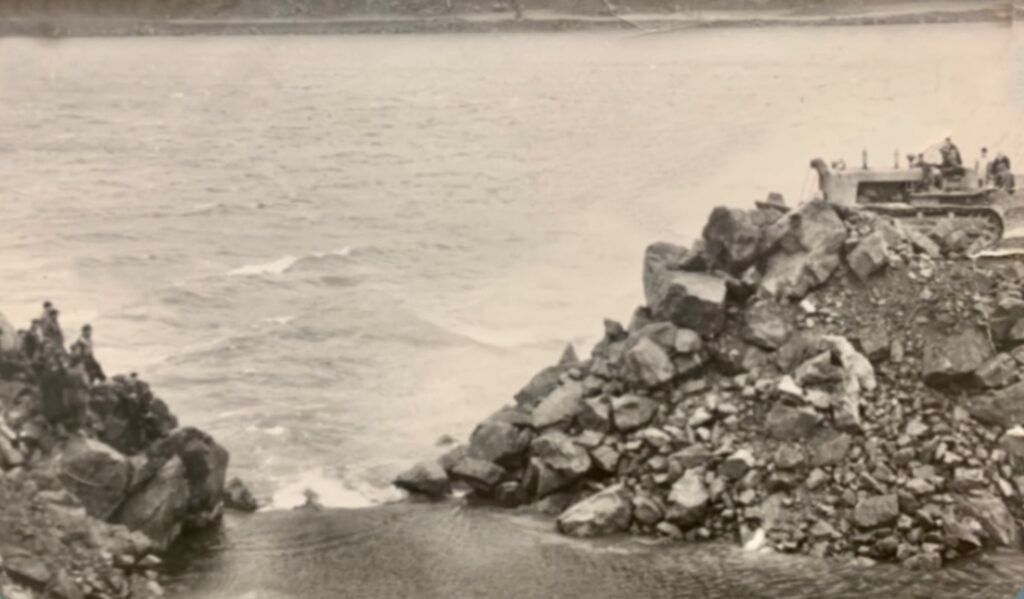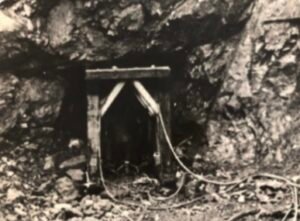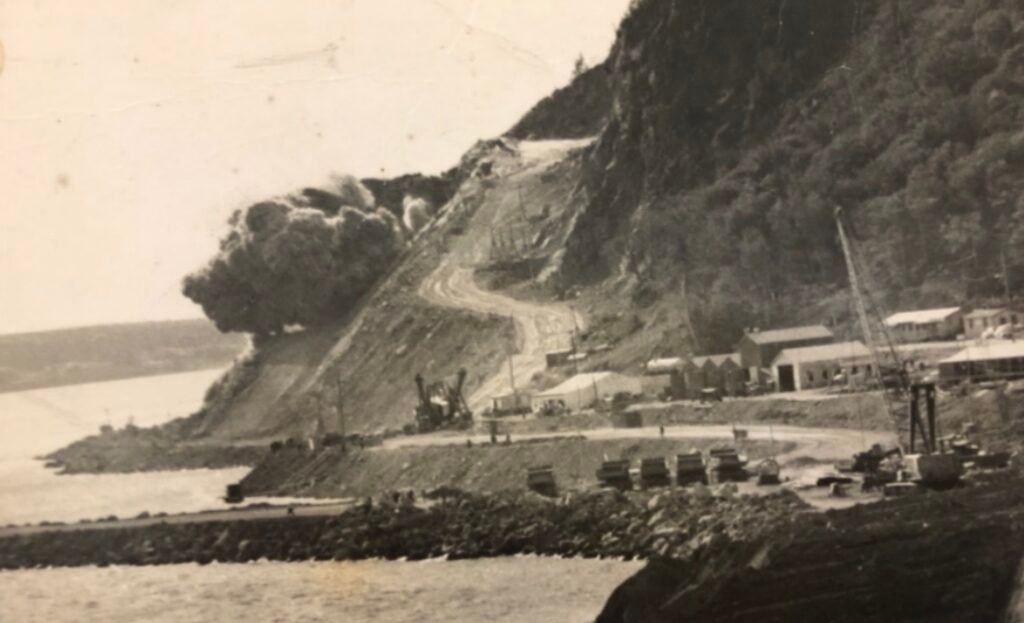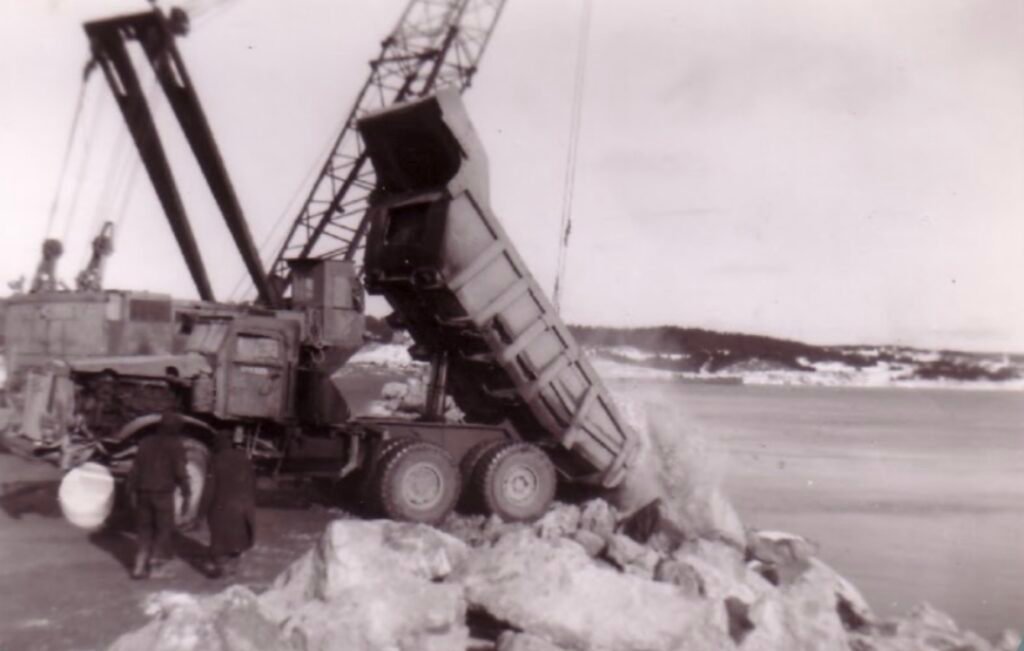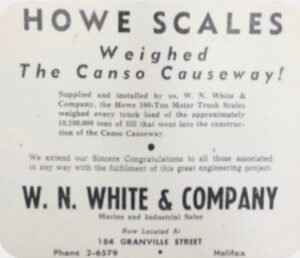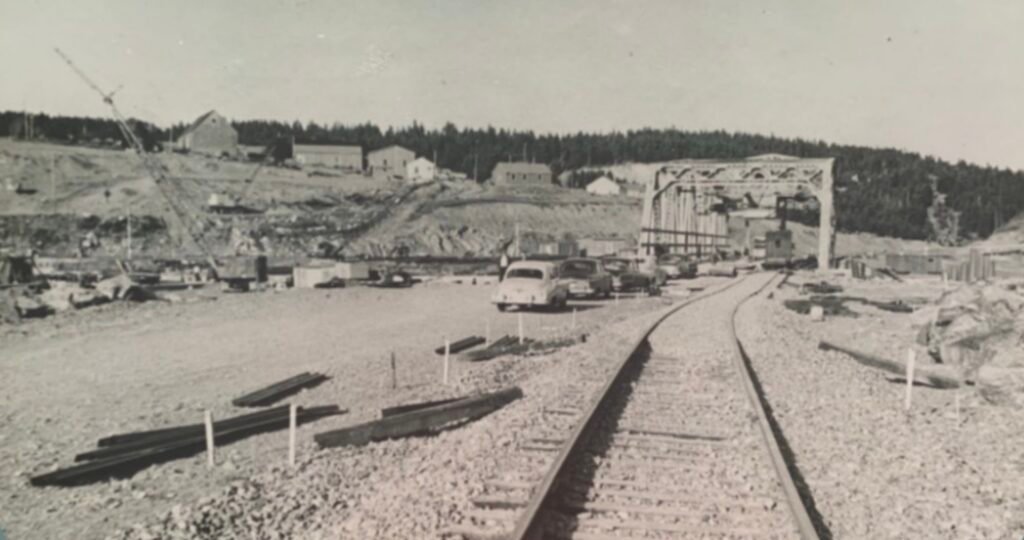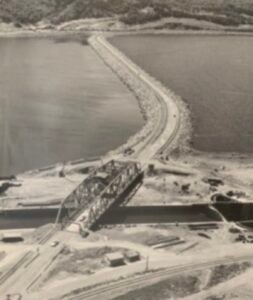Causeway Construction
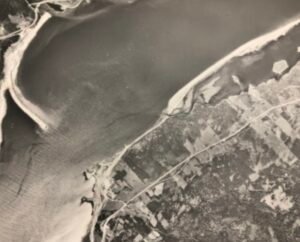
Preparation
In June of 1952, clearing began for the site of the causeway in Aulds Cove. This job was estimated to take three weeks to complete and was done by 148 local workers.At this time, Northern Construction and J.W. Stewart Limited hired men to build roads, install scales and build bunk houses for the workers.
Ship hits Uncharted Causeway
On November 29th, 1954, a month before completion, a Norwegian Freighter called the S.S. Lonne was travelling from New York to Prince Edward Island and ran aground on the causeway at around 9PM.
The captain was using old charts that did not contain the partially completed causeway.Luckily, because the ship nor the causeway were damaged, it was not newsworthy. The S.S Lonne was travelling empty and was freed at around 10AM the next morning.The captain of the ship said to Harry MacKenzie, engineer of the causeway construction, “If I could’ve have gone a little faster, I could have jumped over it.”
The Official Start
On September 16th, 1952 construction of a causeway officially began.Lionel Chevrier, Federal Minister of Transport, set off the first dynamite charge.It was an eight-ton charge that lifted 40,000 tons of rock debris from the face of Cape Porcupine, launching the $22 million project.After the mountain side settled from the blast, Premier Angus L. Macdonald rode in the Euclid truck that transported the rock from Porcupine to where he dumped the first official load of fill into the Strait of Canso.
Closing the Gap
On December 10th, 1954 at 8:30PM, the final load of rock fill bridged the gap between mainland Nova Scotia and Cape Breton Island. This job was not completed without challenges.The powerful tidal current between the gap swept boulders down the Strait. The current became stronger as the gap became smaller and smaller. The force was so strong that it resulted in the depth of the Strait becoming deeper than before, from 187 feet to 218 feet deep.
Pictured above are Joe Lester, Len MacDonald, C.P. Wenesbo and Dave MacIsaac, causeway construction workers.
Blasting
Coyote holes were used to carry out the blasting of Cape Porcupine.This method allowed a great deal of fill to come from one blast. Holes were made 4-5 feet high and wide, and went 100 feet into the face of the mountain, where they branched off 50 feet in each direction. The holes were loaded with dynamite, bringing down 350 to 400 thousand tons of rock with each blast.
Dumping
The blasted boulders were taken from the base of Cape Porcupine and were dumped by 34-ton Euclid trucks.After rocks were dumped, bulldozers were used to push them into place.Powerful tidal waters often swept the rocks further down the Strait from where they were originally dumped, meaning more fill was needed.In October of 1953, 123,968 truckloads of rock were dumped into the Strait, making 117,891 total loads and 4.1 million tons dumped to date.
Scales used in the Canso Causeway
Supplied and installed by W.N. White & Company, the Howe 100 ton motor truck scales weighed every truck of fill that went into the construction of the Canso Causeway.They weighed 10.2 million tons of rock that came from Cape Porcupine.
Connection Completed
On the morning of December 11th, Engineer Harry MacKenzie made the first unofficial crossing of the newly connected Road to the Isle.“I drove the first car across the Canso Causeway. The day after it was finished, I went down. I was looking around the job as usual. I said to myself, I bet I can get across.’‘I went to the office… and I said come on, we’re going for a ride… We’re going to Canada.’‘I had to dodge around the boulders and I drove right across the Causeway and up over Porcupine and down to the ferry (at Mulgrave).”Harry MacKenzie, Cape Breton’s Magazine issue 25 (1979)
Causeway Statistics
Length through the water: 4500 ft. – 1371.6 m
Length from Aulds Cove: 7000 ft. – 2134 mSurface width above water level: 80 ft. – 24.38 mWidest spot on the ocean floor: 860 ft. – 262 mDepth at the deepest point: 218 ft. – 66.14 mLINK TO FACEBOOK VIDEO:



